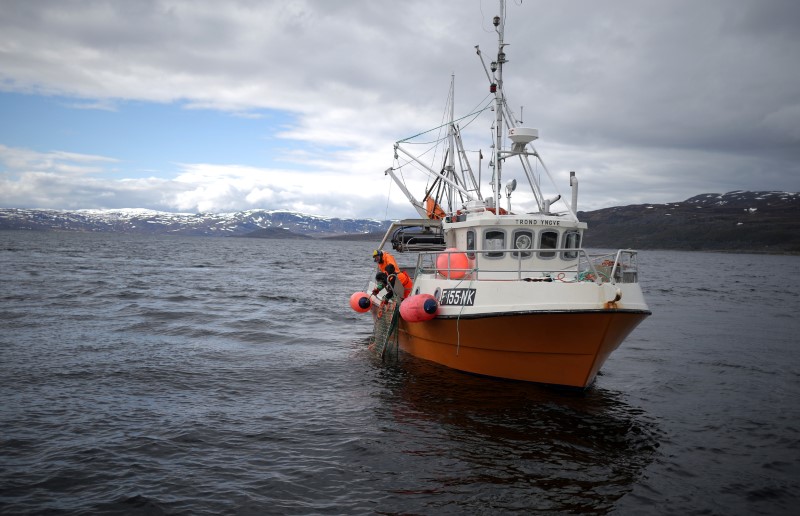How a market-based fund could help prevent the tragedy of the commons in the Arctic’s international waters
An international investment fund could unite nations to protect shared natural resources in the Arctic Ocean.

According to the United Nations’ Convention on the Law of the Sea, the natural resources in the high seas are free for any nation’s exploitation. While UNCLOS includes provisions for cooperation, conservation, and management, these shared natural resources in the Arctic Ocean are still at risk of becoming a victim of the tragedy of the commons.
Japan may overfish a regulated yet at risk fishery, decimating an Arctic fishery. Russia may inadvertently release toxic elements from seabed mineral extraction, politically paralyzing future resource development activities. A United States oil tanker navigating in a newly opened shipping route may turn into the 21st century’s Exxon Valdez.
In these examples, the tragedy of the commons refers to the unsustainable use of the natural resources in the Arctic Oceans’ international high seas. Such natural resources could include gold, copper, oil, natural gas, cod, and herring. There is a clear benefit for the nation that develops these resources; however, the costs associated with the development are shared by us all. All nations have a stake in the sustainable development of international Arctic natural resources.
Safeguards exist for some natural resource development in the Arctic Ocean. The United Nations Convention on the Law of the Sea establishes the International Seabed Authority for seabed mineral resources and Regional Fishery Management Organizations for fisheries. Nevertheless, no RFMO exists in the central Arctic Ocean even though fisheries are anticipated to extend into the central Arctic Ocean’s high seas.
In the interim, the Arctic nations are taking steps toward Arctic natural resource sustainability. Last fall, the United States, Canada, the Kingdom of Denmark, Kingdom of Norway, Russian Federation, People’s Republic of China, Iceland, Japan, Republic of Korea, and the European Union signed onto a 16-year, legally-binding moratorium that prevents unregulated commercial finishing on the high seas of the Central Arctic Ocean.
But what happens after these next 16 years?
Market-based financial mechanisms can bridge the gap between existing regulatory frameworks and future sustainable development. The Arctic Council, the World Economic Forum, and the United Nations Framework Convention on Climate Change, among others, have an opportunity to establish a new innovative financial mechanism modeled after the Green Climate Fund. This new Arctic-focused fund, the Arctic Commons Fund, could invest in sustainable development of the Arctic’s shared resources and help Arctic communities adapt to the unavoidable consequences of resource development. The fund would provide the opportunity to all Arctic actors to internalize the negative externalities in high seas resource development.
The Arctic Commons Fund could be aligned to the goal of the Arctic Council’s Sustainable Development Working Group, the WEF’s Arctic Investment Protocol, and United Nations’ Sustainable Development Goals 13: Climate Action and 14: Life Below Water. As such, the Arctic Council could lead the fund with the WEF and UNFCCC serving as integral fund partners.
The Arctic Commons Fund would present a new paradigm for sustainable resource development. Financing often remains one of the largest hurdles to undertaking Arctic sustainability and resiliency projects. It could inject new funding from global actors to benefit the Arctic communities and all international citizens. It could kickstart projects focused on the sustainability of any high seas’ natural resource. For example, Arctic communities could receive investments from the fund to establish the lacking RFMO for the Central Arctic Ocean’s high seas. Essentially, everyone would be insured against international actors’ risks taken in the region.
When international actors introduce new risks to the Arctic ecosystems, in parallel, they could invest in the Arctic Commons Fund to defray those risks. Their investment could be a rate proportional to incurred risks of resource development, extraction, or use. The WEF could lead an economic analysis that determines the exact contribution rate tied to natural resource development.
To contextualize the Arctic Commons Fund, consider two potential resource development activities: an American company that wants to develop a new deep-sea natural gas operation and a Canadian company that wants to fish in unregulated fisheries. Both companies would be use risk management analyses or proxies to determine their environmental impacts. After a comparison, it could be found that the deep-sea natural gas operation would present a greater environmental risk than the fishing in an unregulated fishery. As such, the American company would contribute a greater amount to the new Arctic fund than the Canadian company.
The UNFCCC’s Green Climate Fund proved that collective investment in prevention projects is possible. But, the Green Climate Fund is an insufficient investment vehicle to focus on Arctic high seas’ resources. Instead of relying on predominantly public sector contributions, the Arctic Commons Fund would receive contributions from private and public enterprises based on their resource development activities. It would reduce funding uncertainties tied to political instability, as currently observed in the United States’ wavering contribution commitments to the Green Climate Fund. In addition, due to the magnitude of risks facing the Arctic, the Arctic actors would benefit from a region-focused fund.
At the inaugural assembly of the Arctic Circle in Reykjavik, Iceland in 2013, former UN Secretary-General Ban Ki-moon asserted, “The Arctic is a bellwether. The risks there should warn our whole world.”
We all share the risks facing to Arctic high seas’ natural resources. We all share the obligation to sustain them. We all share the opportunity to reap their benefits.
Let us invest now in our shared natural resources and launch an Arctic Commons Fund to prevent the tragedy of the commons in the Arctic Ocean.
Daniel Bicknell is a Master in Public Policy candidate at the Harvard Kennedy School.

The views expressed here are the writer’s and are not necessarily endorsed by the Arctic Initiative or ArcticToday, which welcomes a broad range of viewpoints. To submit a piece for consideration, email commentary (at) arctictoday.com.